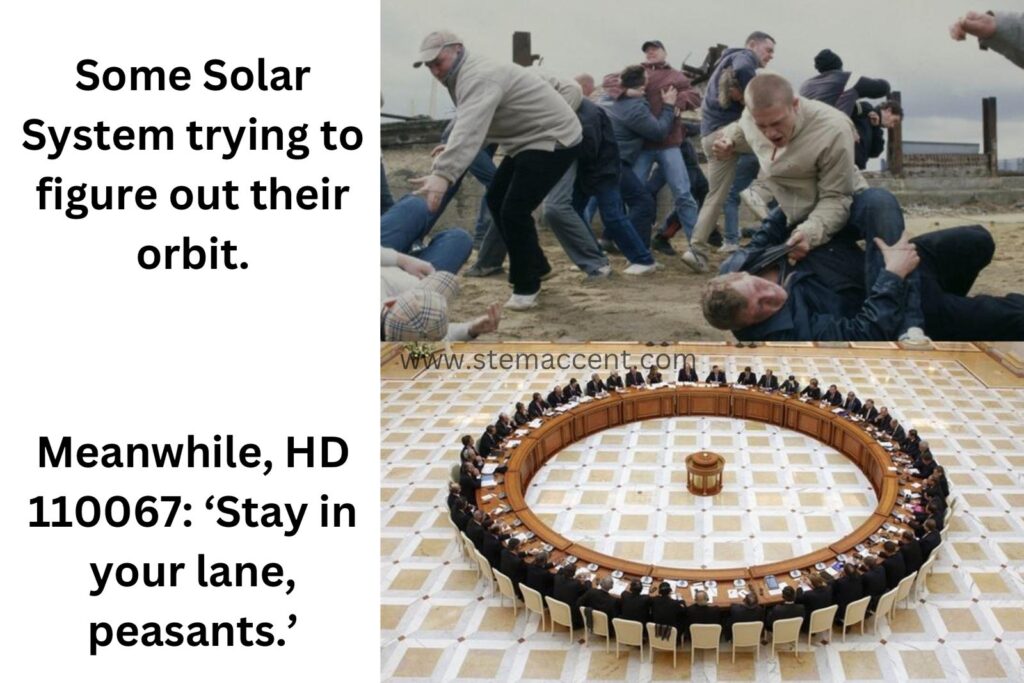A ‘Mathematically Perfect’ Star Exists, and It’s Blowing Astronomers’ Minds
Alright, space enthusiasts, get ready for this: scientists have discovered a star system called HD 110067, and it’s the universe’s version of a flawless Insta reel loop. This system, located about 105 light-years away in the constellation Coma Berenices, has six planets orbiting in a perfectly synchronized rhythm. Think of it like celestial choreography but on a cosmic scale.
What Makes HD 110067 So Cool? The six planets in this system aren’t just randomly floating around. They’re locked in a rare orbital resonance, meaning their movements are mathematically synced. Picture a clock with gears that move in harmony HD 110067 is that clock, but way cooler.
For example, one planet completes its orbit exactly in the time it takes another to orbit twice, and so on. This kind of precision isn’t just rare it’s practically unheard of!
Astronomers originally thought HD 110067 was a senior citizen of the galaxy at around 8 billion years old. But after a closer look, it turns out this star might be more of a cosmic millennial, clocking in at just 2.5 billion years old. “Because these stars have similar evolution tracks and rotation rates, we can understand what point the star is at in its lifetime,” said lead study author Maddie Loupien, an astronomy master’s student at Sorbonne University in Paris. The calcium lines and spin rate led the team to calculate an age of about 2.5 billion years for HD 110067 give or take 800 million years.
Can we go there? Sorry to crush your space-travel dreams, but none of the planets in this system are in the habitable zone (a.k.a., the Goldilocks zone where life could exist). These planets are way too close to their star, with orbits ranging from 9 to 55 days. Translation: it’s hotter than your laptop after 12 hours of gaming.
This discovery isn’t just a “cool fact to drop at parties.” It’s helping astronomers understand how planetary systems form and how common these perfect setups might be in the universe. Plus, it gives us a glimpse into the kind of crazy, complex math the universe uses to keep everything running smoothly.
HD 110067 is proof that the universe loves flexing its perfection. From flawless orbital rhythms to surprising discoveries, this system is a reminder of how wild and beautiful space can be.






